Peaked Electricity: conventional peak was 2007
fracked gas kept electricity use high, powered new peak in 2018
related page: Olduvai Gorge theory
- peak electricity
- energy sources
- coal
- nat. gas
- nuclear
- renewables
- hydro
- biomass
- wind
- solar
- electric grids
Electricity peaked in the US from conventional fuels in 2007, just before the fracking boom took off. Fracked gas has mostly replaced conventional gas since then, and increased "natural" gas powering of electric grids. Fracking fueled a new electric peak in 2018.
- coal, uranium and conventional natural gas are long past peak in USA
- natural gas (70% fracked) is the biggest energy source for the western, eastern and Texas power grids
- almost no oil is used for electricity
- fracked oil and gas are toxic, and estimates of frackable fuels are exaggerated to boost share values and reduce public concern about depletion. Fracking has been a huge boom but earliest fields are past peak. Fracked oil peaked just before covid and fracked gas is either near or at peak.
- hydroelectricity from dams peaked in US because the best sites already dammed, climate chaos may reduce snowpack for western dams
- solar and wind could power a smaller, steady state economy, not our "current" consumption and growth
- electric grids require constant balance of generation and usage, there are probably not enough minerals to build enough batteries to power always-on grids with intermittent sources
Fracked gas sustained plateau, covid closures lowered consumption.
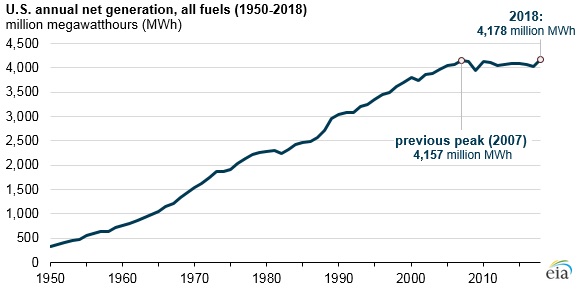
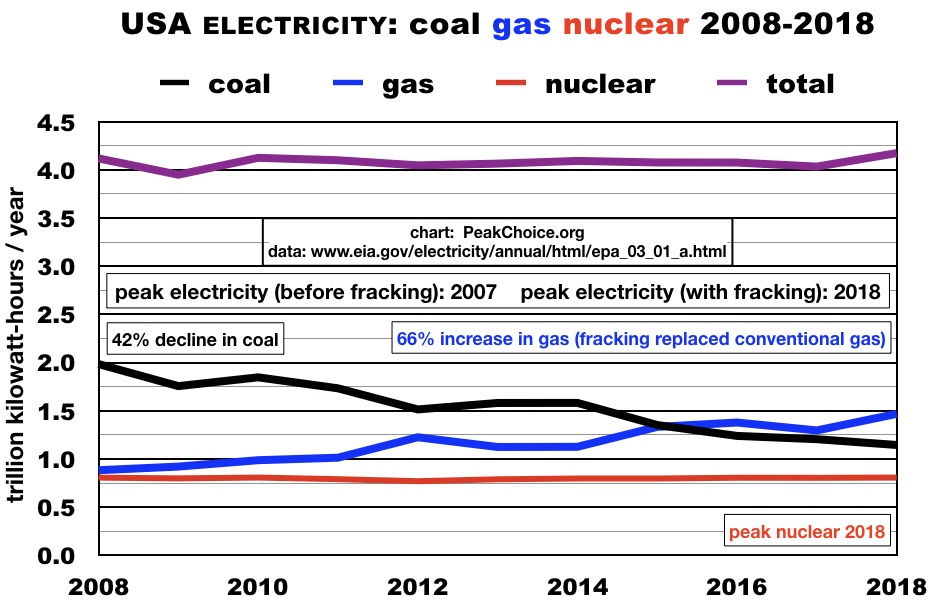
data from Energy Information Administration, US Department of Energy
www.eia.gov/electricity/annual/html/epa_01_01.html
www.eia.gov/electricity/annual/archive/03482009.pdf
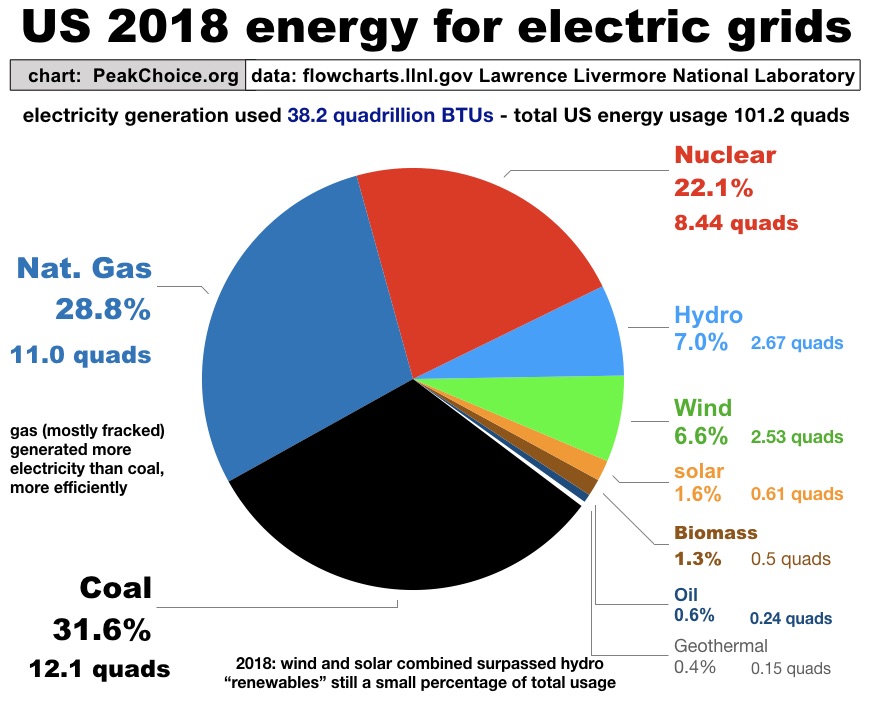
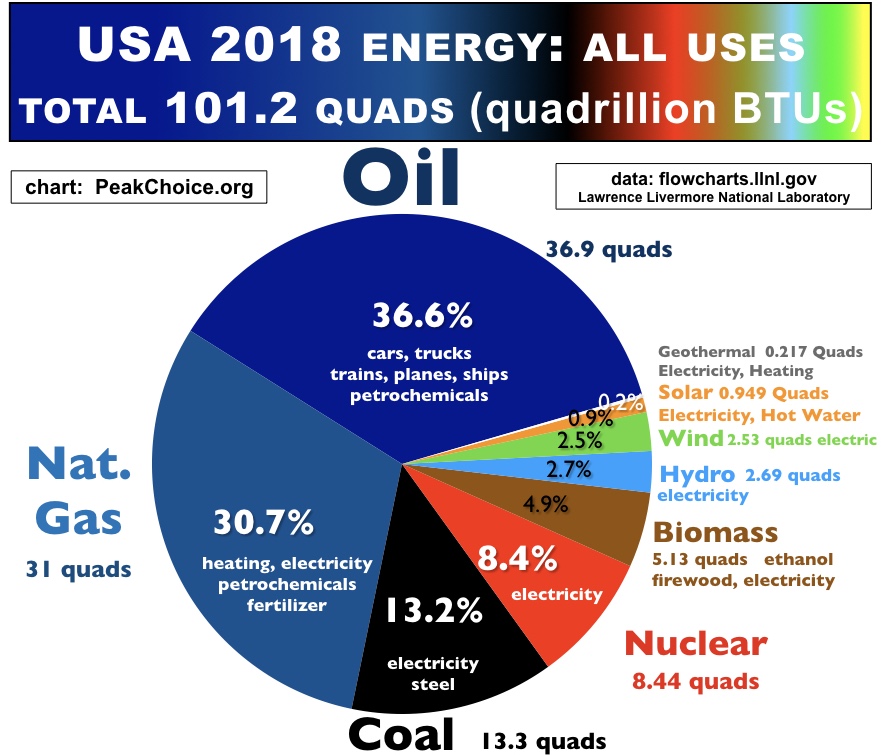
Coal: dirtiest source, past peak
Coal is the dirtiest type of fossil fuel in terms of mining damage and greenhouse gas production.
Estimates of the amount of remaining coal have been exaggerated and "peak coal" globally is likely in the next decade or two. There’s not enough coal to fuel endless growth projections, but there is enough to further foul the air.
Coal peaked in the US in 1999, in terms of energy content. In Pennsylvania, where coal mining started, it peaked in 1920. US coal has also declined in terms of energy content. Some of the remaining coal is being extracted through mountaintop removal, which has caused irreversible destruction of parts of Appalachia.
In Britain, coal peaked in 1913 and Germany had Peak Coal during World War II.
The last coal combustion will probably be in China. The last coal export will probably be from Australia to China.
details: www.peakchoice.org/peak-coal.html
Natural Gas: conventional gas running out, replaced by fracked gas
Natural gas is the cleanest burning fossil fuel and it is also the most versatile, which has led to increased variety of uses of it. In recent years, its role in the electric grid has increased and now powers about one sixth of US electrical demand.
US conventional natural gas production peaked in 1973.
While natural gas is the easiest to use fossil fuel it is also the most difficult to transport, requiring pipelines between the well head and the ultimate user.
Fracked Shale Gas
A new technology called "shale gas" has resulted in a domestic boom of gas production. Shale gas involves "fracking" underground rock with toxic solvents to liberate embedded natural gas.
Industry groups claim shale gas is a "100 year" supply. The early wells in the Barnett shale gas field near Dallas, Texas have sharp decline rates (70% in their first year), so shale gas will probably be a short term boom followed by sharp bust.
The shale bubble boomed under Obama, as conventional gas continued its sharp decline (the motive to finally start fracking). The Trump administration dramatically increased fracking, now above the conventional unnatural gas peak in 1973.
In 2018, about a fifth of US electricity came from fracked gas, more than hydroelectric dams, wind farms and solar panels combined.
for more info: www.peakchoice.org/peak-frack.html
Post Carbon Institute resources on fracking:
Richard Heinberg, "Snake Oil: How Big Energy's Misleading Promise of Plenty Imperils Our Future"
Liquid Natural Gas
LNG is cooled to about 260 degrees below zero (F) to compress it for transoceanic transit. LNG boats and terminals have the energy potential of a small nuclear bomb if they explode.
Nuclear Power: the worst way to boil water
The richest uranium deposits in the US were in the Colorado plateau, the best were extracted decades ago (with severe health and ecological impacts). Globally, uranium deposits are mostly in a few countries and are nearing their peak.
As of 2010, about half of the nuclear fuel in US power reactors came from the "Megatons to Megawatts" program, which has diverted uranium from dismantled Russian nuclear bombs to civilian fuel production. Using weapons materials for power generation reduces weapons stockpiles, but still creates more high level nuclear wastes. This program ran out in 2013.
Reprocessing: most toxic technology, a path to nuclear weapons and a police state
Some nuclear boosters want to revive plans for "reprocessing" of irradiated fuel rods, the most toxic technology ever invented. Reprocessing dissolves extremely radioactive "spent" nuclear fuel rods into acids, and uses solvents to extract the unfissioned uranium for reuse. The byproducts include the myriad "fission products" left over from the reactor’s operation ("high level waste"), dissolved into a nasty mix of toxic solvents and acids. It is thermally hot, lethally radioactive and extremely difficult to contain.
In 1975, the Nuclear Regulatory Commission published "The Impact of Intensified Nuclear Safeguards on Civil Liberties," also known as the "Barton Report." It predicted that an economy based on nuclear reprocessing would require the suspension of civil liberties to safeguard the nuclear fuel since it would create commerce in nuclear weapons ingredients. Reprocessing also separates out plutonium from irradiated fuel rods. President Ford blocked US plans for reprocessing since it would fuel nuclear proliferation by commercializing weapons materials.
from Dmitry Orlov
http://cluborlov.blogspot.com/2011/03/nuclear-meltdowns-101.html
If we give up on nuclear energy, what will replace it? Nothing, probably. Let me try an example: if your lucrative murder-for-hire business suddenly runs afoul of a few silly laws (even though it has so far killed many fewer people than planes, trains or automobiles) that doesn't mean that you should keep killing people until you find another source of income. Same thing with electricity: if it turns out that the way you've been generating it happens to be criminally negligent, then you shut it all down. If you have less electricity, you will use less electricity. If this implies that economic growth is over and that all of your financial institutions are insolvent and your country bankrupt, then—I am sorry, but at this point in time that's not even newsworthy. Don't worry about that; just keep the nuclear accidents to a bare minimum, or you won't have anything else left to worry about.
renewable energy for a steady state economy
Using solar energy since 1990 taught me that renewable energy could only run a smaller, steady state economy. Our exponential growth economy requires ever increasing consumption of concentrated resources (fossil fuels are more energy dense than renewables). A solar energy society would require moving beyond growth-and-debt based money.
After fossil fuel we will only have solar power, but that won’t replace what we use now. We need to abandon the myth of endless growth on a round, and therefore, finite planet to have a planet on which to live. Will we use the remaining fossil fuels to make lots of solar panels and relocalize food production instead of waging Peak Oil Wars?
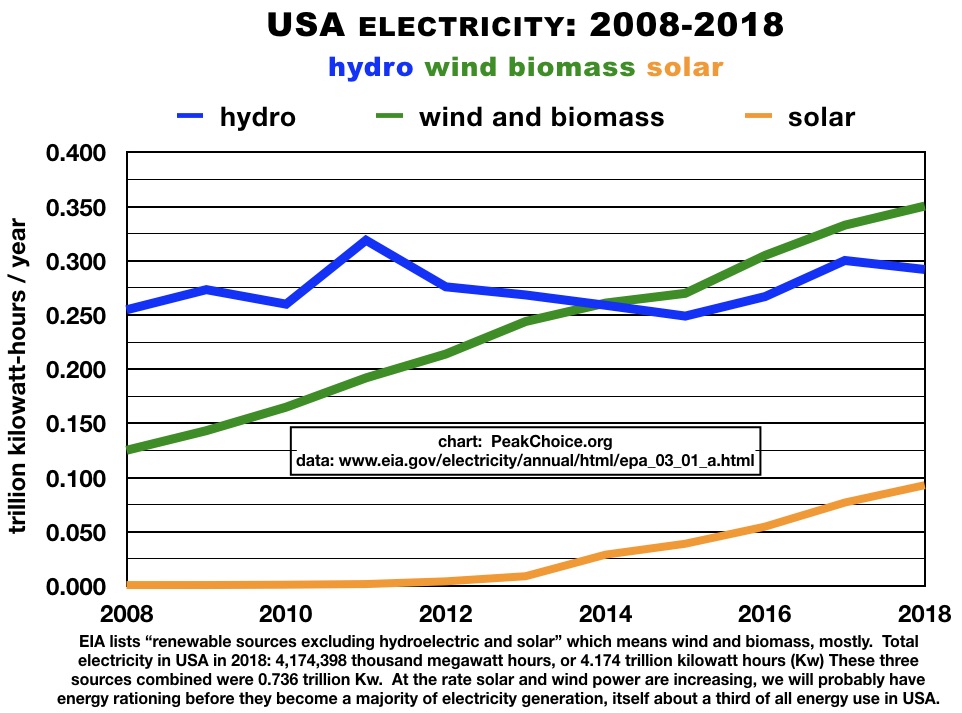
A substantial minority of GMO corn is converted into ethanol to fuel cars (most is used as animal feed). Firewood is also a form of biomass energy. Biomass powered electricity is currently mostly slash wood being burned at lumber mills, but is poised to be substantially expanded. The real estate crash in 2008 led to numerous efforts to burn more trees for power as lumber markets declined due to less housing starts. The next economic shock may include both a housing downturn and decline of fracked gas (conventional gas has dropped greatly in the past two decades).
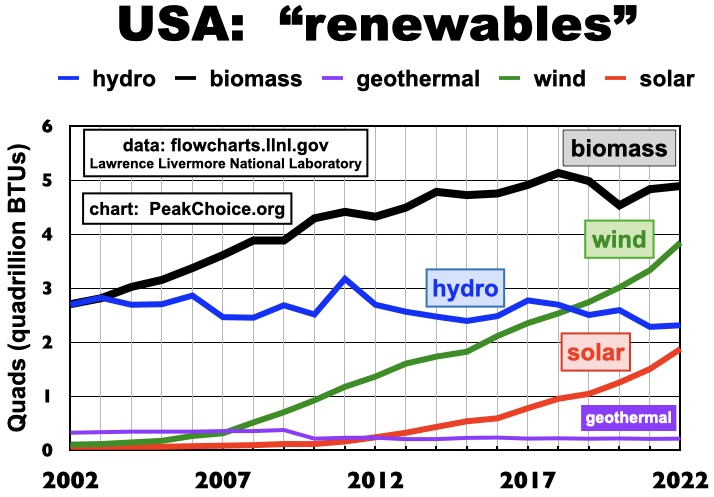
hydroelectric dams damn rivers
Hydropower was the earliest large scale electrical generation and one of the easiest to operate. The fuel is essentially free and renewable (once the dam is built). It is easy to vary the flow rates up and down to match shifts in the load demand. But in the US, most sites with hydroelectric potential have already been damned, so even if society ignores ecological impacts on rivers and fish habitat, there are few places left in North America for more dams.
Grand Coulee dam photos by the author, August 2011. Largest dam in the US, and largest in the world for decades, can generate about six and a half gigawatts.
Currently, the world's largest dam is Three Gorges in China, roughly equivalent to all of the dams in the Columbia River watershed (including Snake River and Willamette tributaries). The Brazilian Amazon also has dams larger than Grand Coulee.
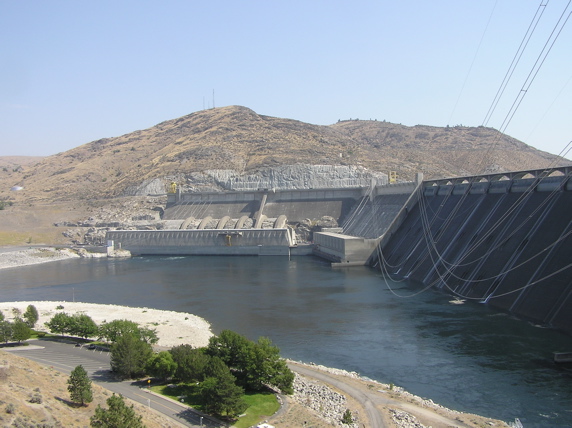
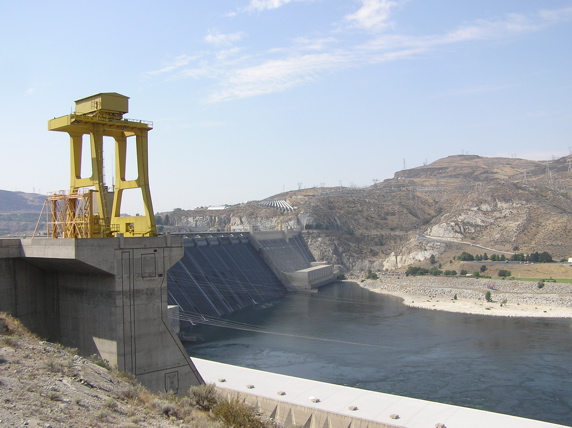
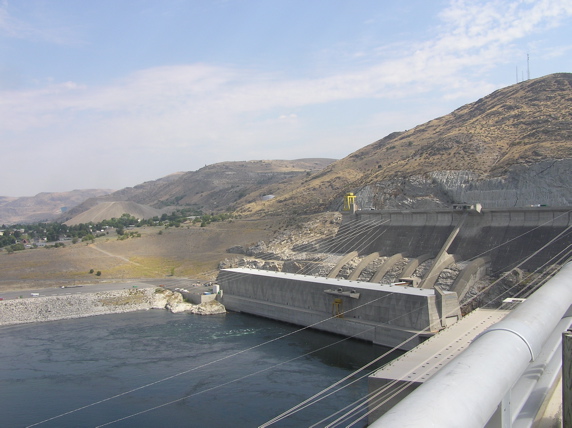
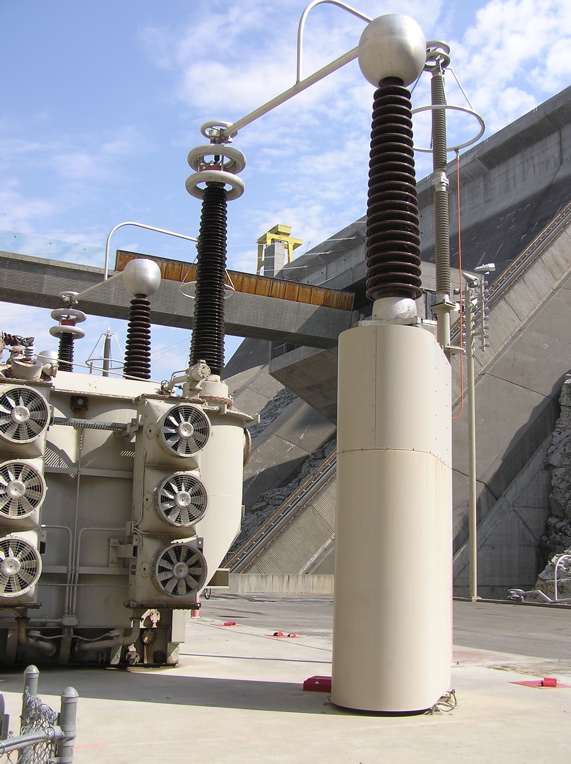
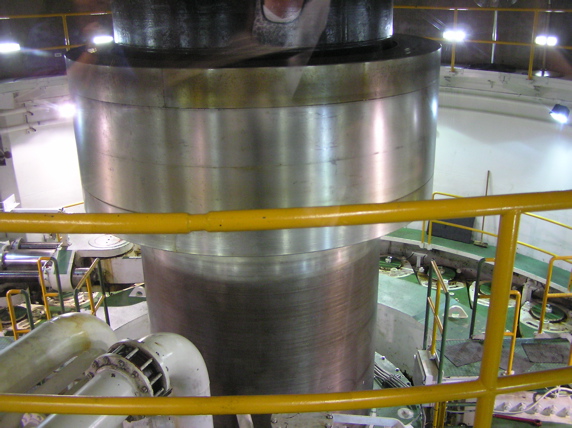
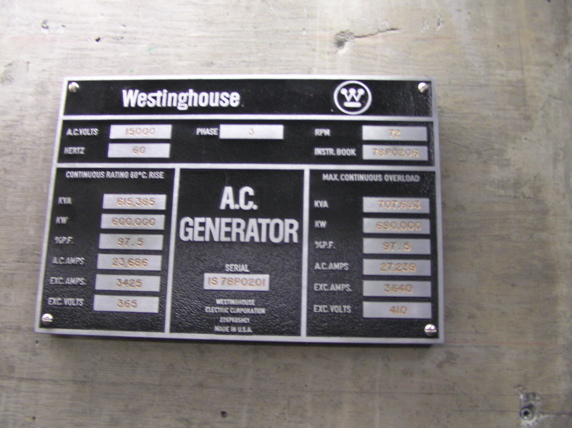
biomass electricity eats forests
is the answer blowing in the wind?
Wind turbines are also a way to use solar power, since sunlight creates wind. Commercial wind turbines require rare earth mineral ores for the magnets, which are mostly found in China. While there has been a big boom in wind farms, they cannot be built fast enough to replace depleting natural gas or the need to stop mining coal due to its ecological devastation.
solar: good for billions of years
Passive solar heating of buildings, solar hot water, and solar photovoltaic electricity are ultimately the best way to power our society. But there is a huge gap between where we are and where we would like to be. Current PV technology requires a global electronics infrastructure, rare mineral ores, copper and other materials that are energy intensive to process. Solar technology is a way to use fossil fuels, not a substitute for them.
solar energy is safe nuclear power, with a 150 million kilometer (93 million mile) evacuation zone
Grid Stability: baseload, balancing, batteries, blackouts
The electric grid requires balancing generation with load demands to keep it stable. Solar and wind power are reliable yet intermittent, it’s not always sunny or windy. Running more than a small portion of the grid with renewables would require major changes to the way the grid runs since it’s hard to store solar and wind power.
The Department of Homeland Security has run planning exercises how to power "critical infrastructure" if the national grids break down and result in "islands" of fragmented grid sections. It will be harder to keep everything powered all of the time as fossil fuels decline, the economy contracts and components age.
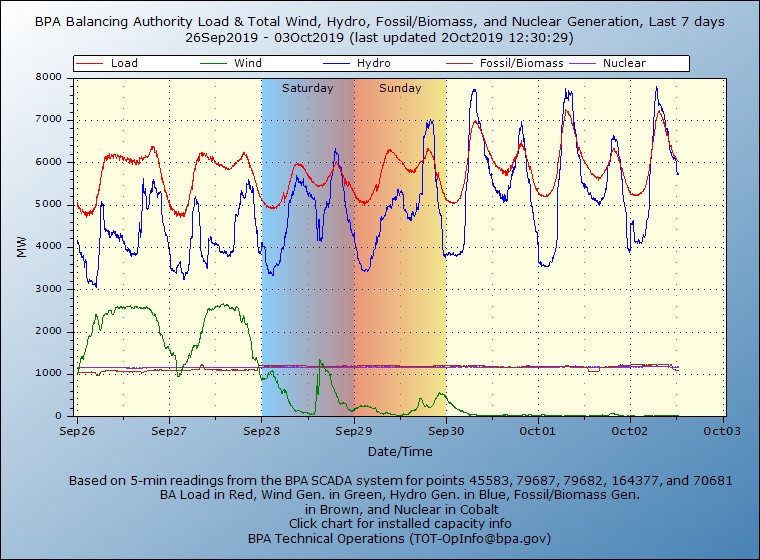
North American electric grids: West, East, Texas, Quebec
North American power grids are roughly divided into a western grid, an eastern grid, Texas and Quebec. The grid is a 24 hour / 7 days a week, 365 day operation - there is no storage capacity in the grid, which makes it difficult to power it completely with intermittent renewable energy sources such as solar and wind. The eastern grid is nearly the entire US east of the Rockies. Most of Texas has its own grid. The western grid stretches from BC to Tijuana, from Denver to the Pacific coast. It is interesting that the most secessionist parts of the US and Canada -- Texas and Quebec -- each are largely on their own power grids.
maps of North American Electric Reliability Commission grid connections

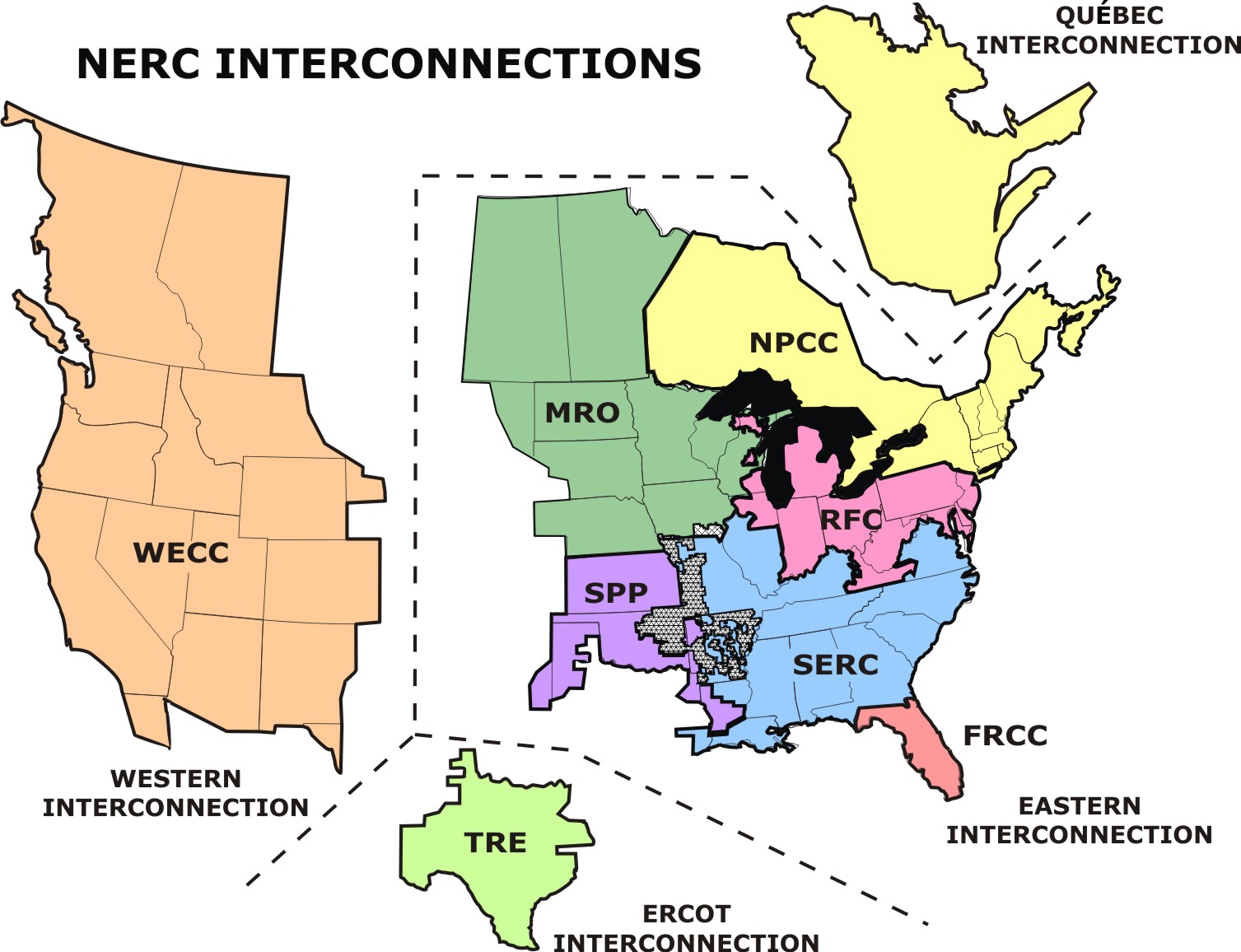
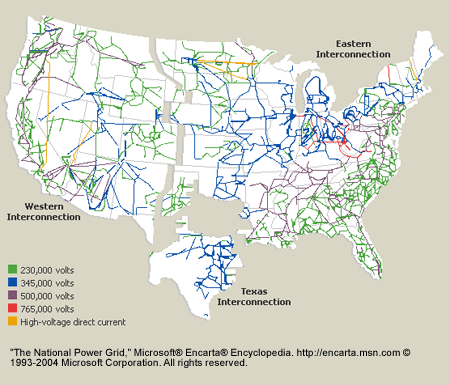
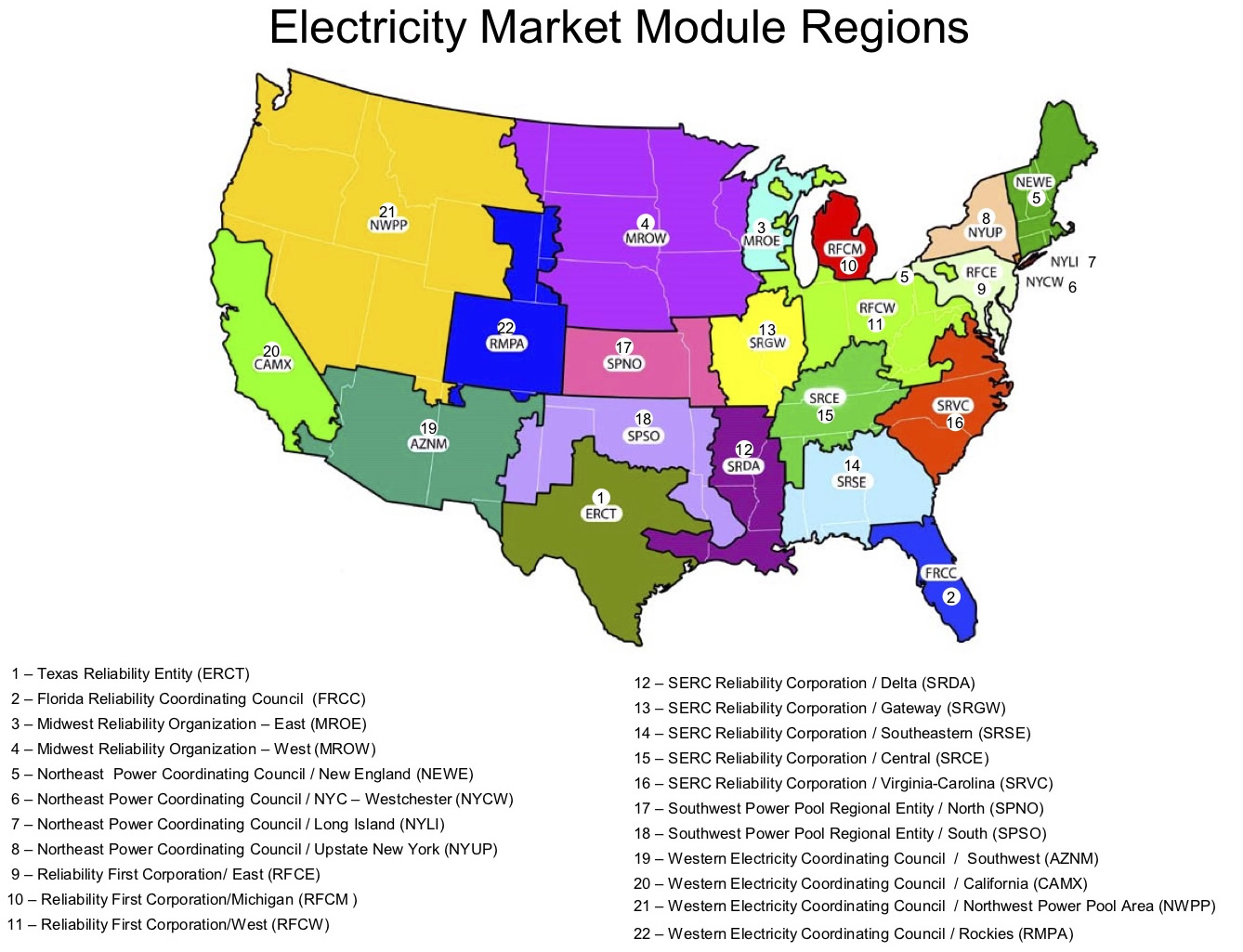
http://bits.blogs.nytimes.com/2013/10/18/electrical-grid-called-vulnerable-to-power-shutdown/
October 18, 2013, 9:00 am
Electrical Grid Is Called Vulnerable to Power Shutdown
By NICOLE PERLROTH
Two researchers discovered that they could freeze, or crash, the software that monitors a substation, thereby blinding control center operators from the power grid.
Over the past few months, the discoveries of two engineers have led to a steady trickle of alarms from the Department of Homeland Security concerning a threat to the nation's power grid. Yet hardly anyone has noticed.
The advisories [copy below] concern vulnerabilities in the communication protocol used by power and water utilities to remotely monitor control stations around the country. Using those vulnerabilities, an attacker at a single, unmanned power substation could inflict a widespread power outage.
Still, the two engineers who discovered the vulnerability say little is being done.
Adam Crain and Chris Sistrunk do not specialize in security. The engineers say they hardly qualify as security researchers. But seven months ago, Mr. Crain wrote software to look for defects in an open-source software program. The program targeted a very specific communications protocol called DNP3, which is predominantly used by electric and water companies, and plays a crucial role in so-called S.C.A.D.A. (supervisory control and data acquisition) systems. Utility companies use S.C.A.D.A. systems to monitor far-flung power stations from a control center, in part because it allows them to remotely diagnose problems rather than wait for a technician to physically drive out to a station and fix it.
http://anz.theoildrum.com/node/3228#comment-264122
[-] cjwirth on November 15, 2007 - 7:39am | Permalink | Subthread | Comments top
Deindustrialization will occur much faster. Power grid failures will occur in the not too distant future. The nation depends on electricity for: industry; manufacturing; auto, truck, rail, and air transportation (electric motors pump diesel fuel, gasoline, and jet fuel); oil and natural gas heating systems; lighting; elevators; computers; broadcasting stations; radios; TVs; automated building systems; electric doors; telephone and cell phone services; water distribution; water purification; waste water treatment systems; government offices; hospitals; airports; and police and fire services, etc. Phillip Schewe, author of "The Grid: A Journey Through the Heart of Our Electrified World," writes that the nation’s power infrastructure is "the most complex machine ever made." In "Lights Out: The Electricity Crisis, the Global Economy, and What It Means To You," author Jason Makansi emphasizes that "very few people on this planet truly appreciate how difficult it is to control the flow of electricity." A 2007 report of the North American Electric Reliability Corporation (NERC) concluded that peak power demand in the U.S. would increase 18% over the next decade and that new power supply sources would not meet that demand. NERC also noted concerns with natural gas disruptions and supplies, insufficient capacity for peak power demand during hot summers (due to air conditioning), incapacity in the transmission infrastructure, and a 40% loss of engineers and supervisors in 2009 due to retirements. According to Railton Frith and Paul H. Gilbert, power failures currently have the potential of paralyzing the nation for weeks or months. In an era of multiple crises and resource constraints, power failures will last longer and then become permanent. When power failures occur in winter, millions of people in the U.S. and Canada will die of starvation and exposure. There are not enough shelters for entire populations, and shelters will lack heat, adequate food and water, and sanitation. The following 2 sources are insightful:
http://sandersresearch.com/index.php?option=com_content&task=view&id=1257
http://www7.nationalacademies.org/ocga/testimony/Blackouts_America_Cyber_Networks.asp
Under this scenario, we would not be able to get the oil to get things running again and thus the U.S. and Canada could not get the power gird back up. The energy house of cards will collapse fast. Because there is no preparation by the governments, it can happen here fast.
